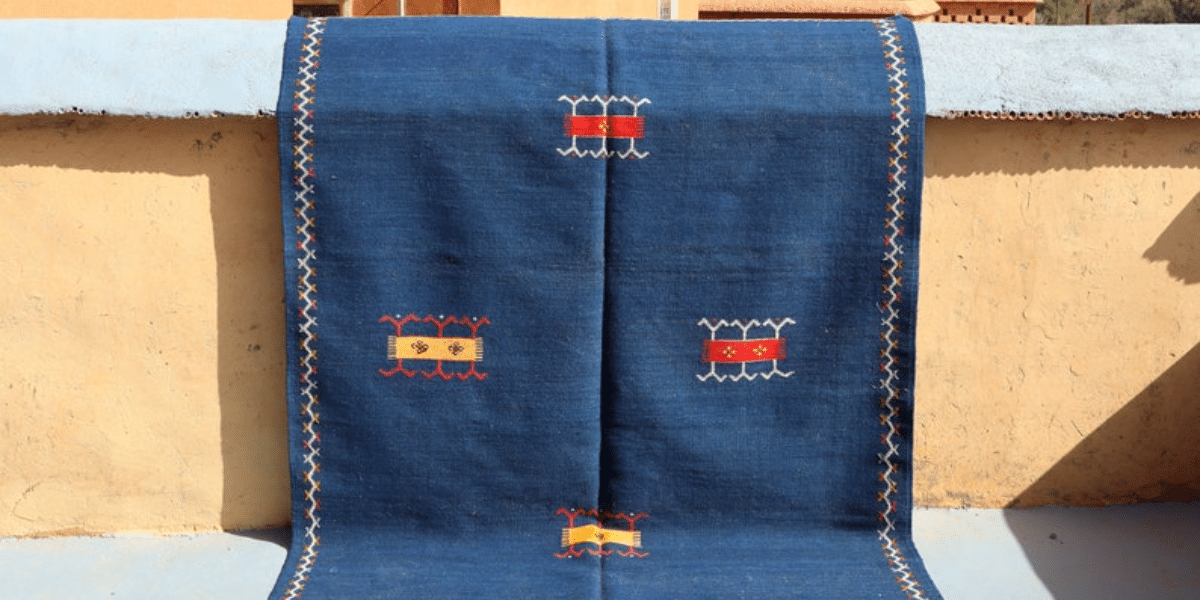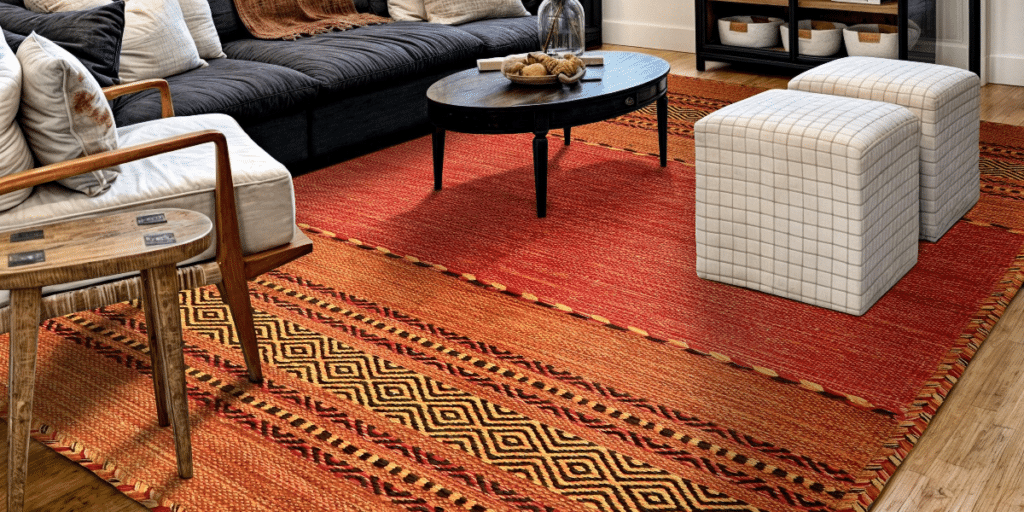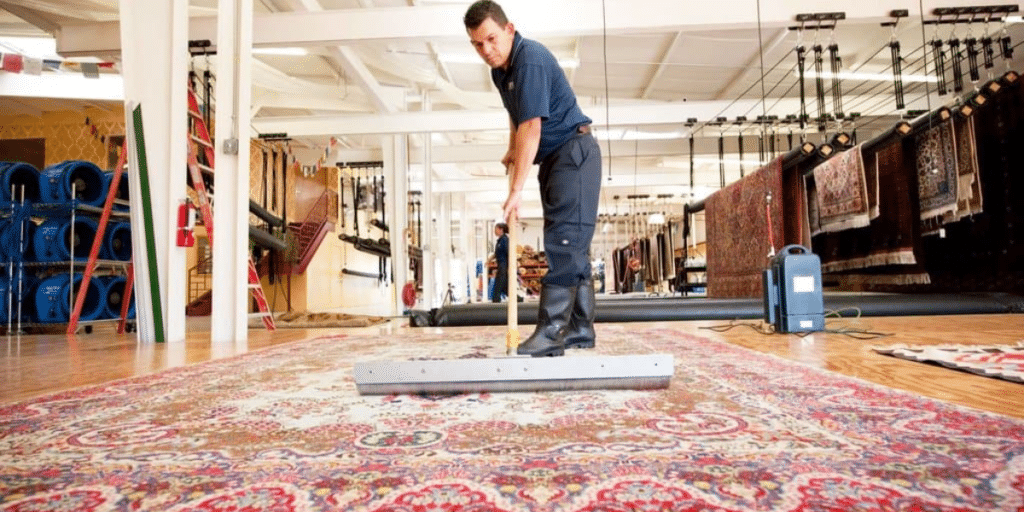Kilim rugs are more than just decorative additions to a home—they’re steeped in history, culture, and artistry. But when it comes to showcasing these flat-woven masterpieces, one question arises: how do you hang a kilim rug properly? Whether you’re looking to display it on a wall, secure it on the floor, or even use it outdoors, this article covers it all. From the best hanging techniques to tips for keeping it in place, we’ve got you covered. The best way to hang a kilim rug is to use methods that preserve its beauty while ensuring stability. Curious? Let’s dive in!
How to Hang a Kilim Rug on the Wall?
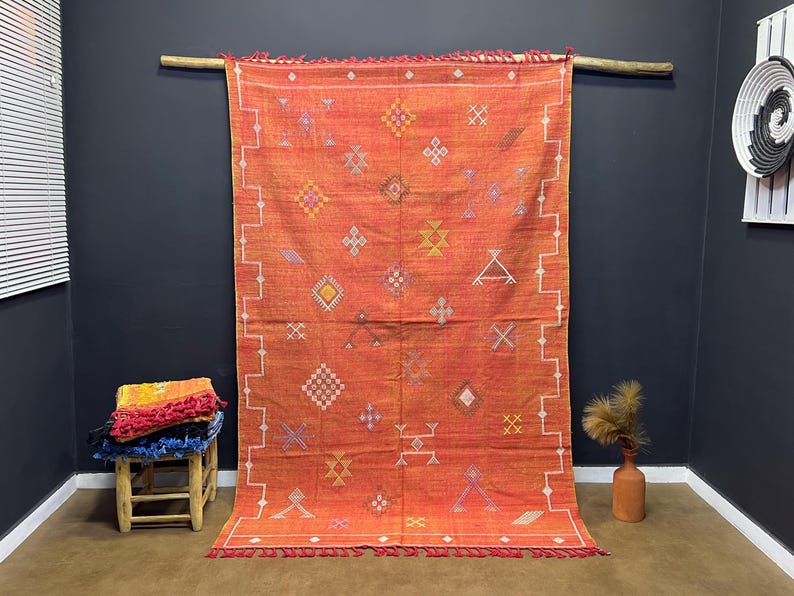
Hanging a kilim rug on the wall is a wonderful way to showcase its beauty while preserving its durability. To hang it effectively and safely, follow these steps:
- Choose the Right Wall Space :Before anything, select a wall that complements the colors and patterns of your kilim. Consider spaces like living rooms, entryways, or even bedroom walls where the rug can serve as a focal point. Ensure the wall is free from moisture and direct sunlight, as these can damage the rug over time.
- Use a Rod and Sleeve Method : Sew a fabric sleeve or loop along the back of the kilim. This sleeve should run the entire length of the top edge to distribute the weight evenly. Use a durable but gentle fabric, such as cotton or muslin. Slide a sturdy rod through the sleeve. Make sure the rod is strong enough to support the weight of the kilim without bending. Fix brackets onto the wall and hang the rod securely.
- Use Velcro Strips: Start by sewing a soft, loop-side Velcro strip along the back of the rug. Then, attach the corresponding hook-side Velcro strip to a wooden mounting board, which can be easily secured to the wall using screws. Once the board is in place, simply press the Velcro strips together, and your kilim will be securely hung without the need for nails or hooks that could damage the fabric.
- Frame Your Kilim: If you want a more polished look, framing your kilim is a great option. A frame with UV-protected glass can also shield the rug from dust and sunlight. However, keep in mind that framing may limit the tactile experience of the kilim’s texture.
How Much Space Should Be Between Rug and Wall?
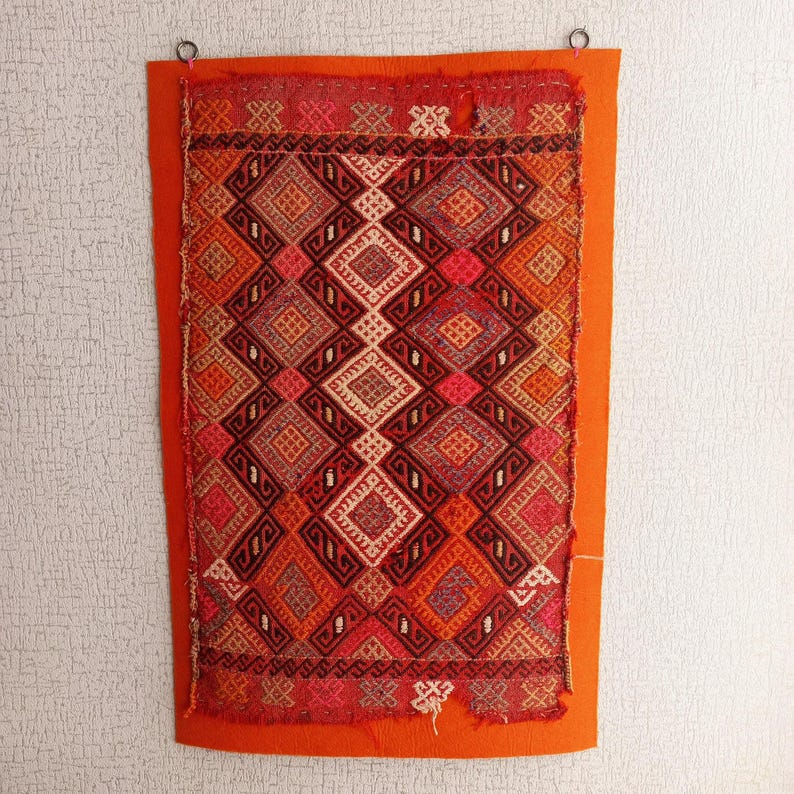
The space between your kilim rug and the wall can influence the overall aesthetic of your room. Whether the kilim is on the floor or hung on the wall, here are some guidelines to help you achieve a balanced look:
- For Wall-Mounted Kilim
When hanging a kilim on the wall, ensure there is enough space around it to highlight its design. A general rule of thumb is to leave: At least 6-12 inches of space on all sides for smaller kilims. And 12-24 inches of space for larger kilims, especially in spacious rooms.
This spacing creates visual breathing room and prevents the rug from appearing cramped. If hanging above furniture, leave about 6-10 inches of space between the bottom edge of the kilim and the top of the furniture.
- For Floor Kilims
When placing a kilim on the floor, consider its size in relation to the room:
- In smaller rooms, leave 6-18 inches of exposed floor between the rug’s edges and the walls.
- In larger rooms, you can leave up to 24 inches of space to frame the kilim effectively.
What Is the Best Thing to Hold a Rug in Place?
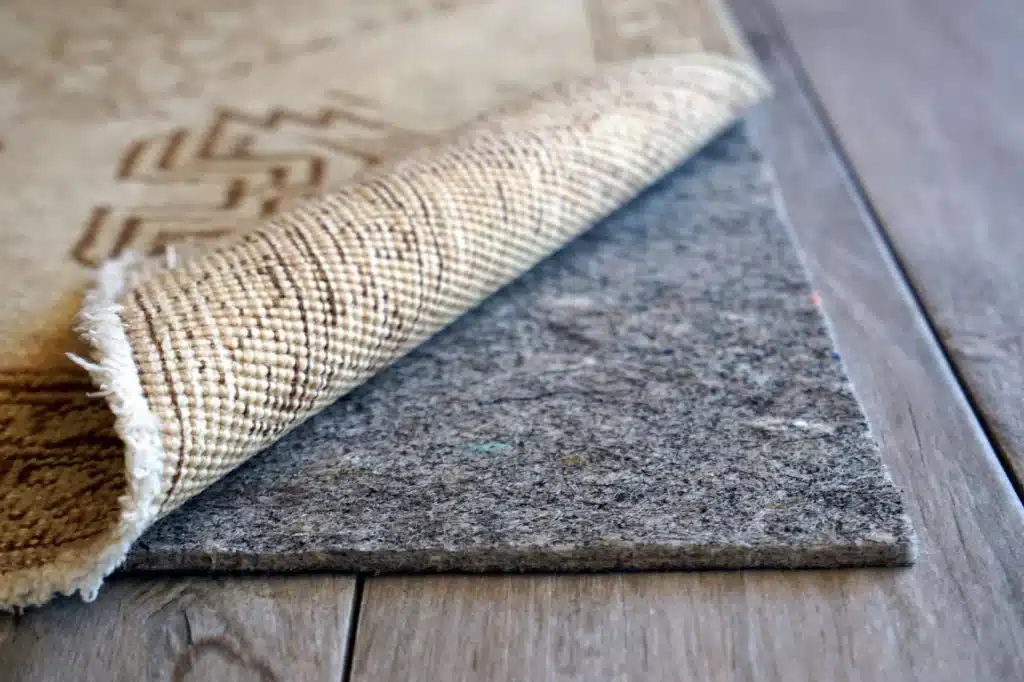
Keeping a rug in place, especially a lightweight kilim, can be a challenge. These flat-woven textiles tend to shift or curl, particularly in high-traffic areas. The right solution depends on where and how the kilim is being displayed—on the floor or the wall. Let’s explore some of the best options for ensuring your rug stays securely in place.
- Using Rug Pads for Stability :Rug pads are one of the most effective ways to keep a kilim secure on the floor. These pads are designed to create friction between the rug and the floor, preventing slipping and sliding. Made from materials like rubber or felt, they not only hold the rug in place but also add a layer of cushioning that protects the fibers from wear.
- Double-Sided Rug Tape for a Quick Fix :Double-sided rug tape is a practical choice, particularly for smaller kilims or rugs placed in high-traffic areas. By adhering to both the underside of the kilim and the floor, the tape keeps the rug firmly in place.
- Non-Slip Mats for Convenience :Non-slip mats are another excellent option, especially if you want something lightweight and easy to adjust. These mats are thin, rubberized sheets that sit underneath your kilim and provide just enough grip to keep it from sliding. They’re great for homes with mixed flooring—whether you’ve got hardwood, tile, or even carpet, a non-slip mat can do the trick.
How do you display a kilim rug as wall art?
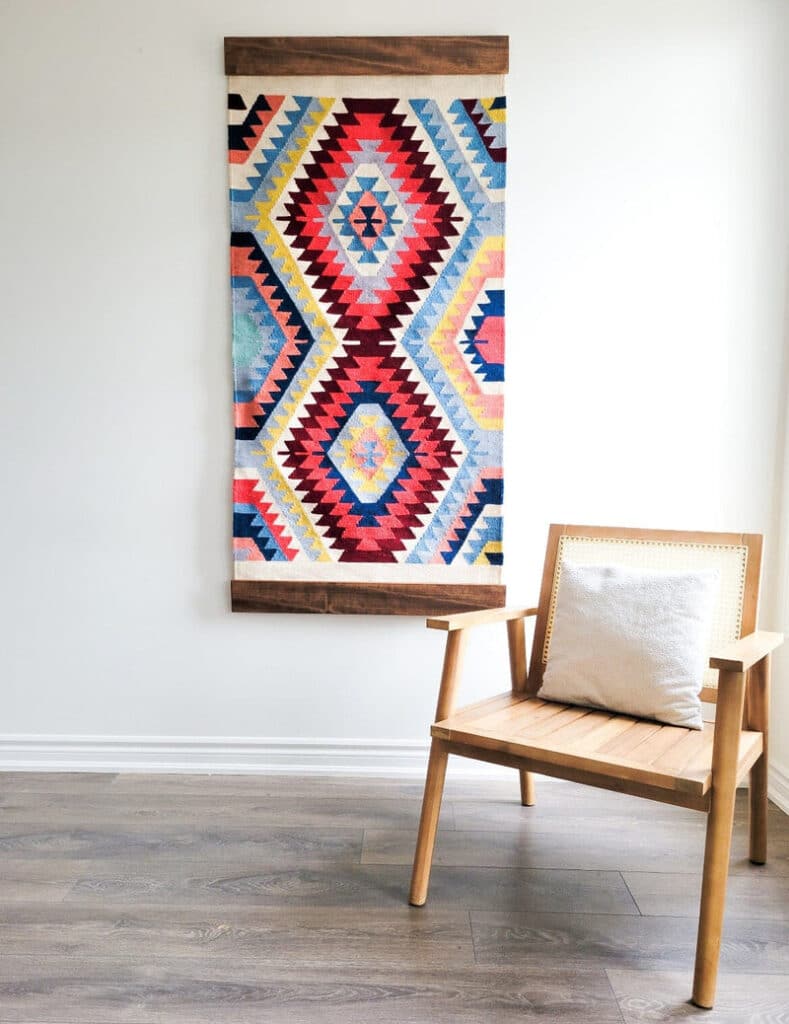
Displaying a kilim rug as wall art adds a timeless and cultural touch to your space. Here’s how to do it:
- Choose the Right Spot: Pick a spacious wall where the kilim can stand out without overwhelming the room. Good lighting, natural or accent, enhances its texture and colors.
- Prepare the Kilim Rug: Make sure the rug is clean and free of creases. Use gentle steaming or a low-heat iron with a cloth buffer to flatten it.
- Use a Wooden Rod: Sew a fabric sleeve along the top edge of the kilim and slide a rod through. Hang the rod on brackets for a clean, elegant look.
- Attach with Velcro: Adhesive-backed Velcro strips are a simple option. Attach one side to the rug and the other to the wall, ensuring the strips can hold the weight.
- Try Decorative Clamps: Clamps or clips can hold the kilim in place. Avoid sharp or damaging materials that could harm the weave.
- Frame the Kilim: For added protection and a luxurious look, mount the rug in a shadow box or custom frame.
- Maintain the Display: Dust it regularly and rotate the rug occasionally to prevent fading. Keeping the rug clean and secure ensures it remains a striking centerpiece.
Wrap Up

Kilim rugs collection
Explore a diverse collection of rugs crafted for style and durability. From kilims to modern designs, find your perfect rug at Kilim Provenance.
At Kilim Provenance, we understand the value and craftsmanship of these timeless pieces. By taking the time to secure and showcase your kilim properly, you’re honoring the artistry and tradition behind it. So, go ahead and let your kilim rug shine—it’s more than just a rug; it’s a story worth telling.
